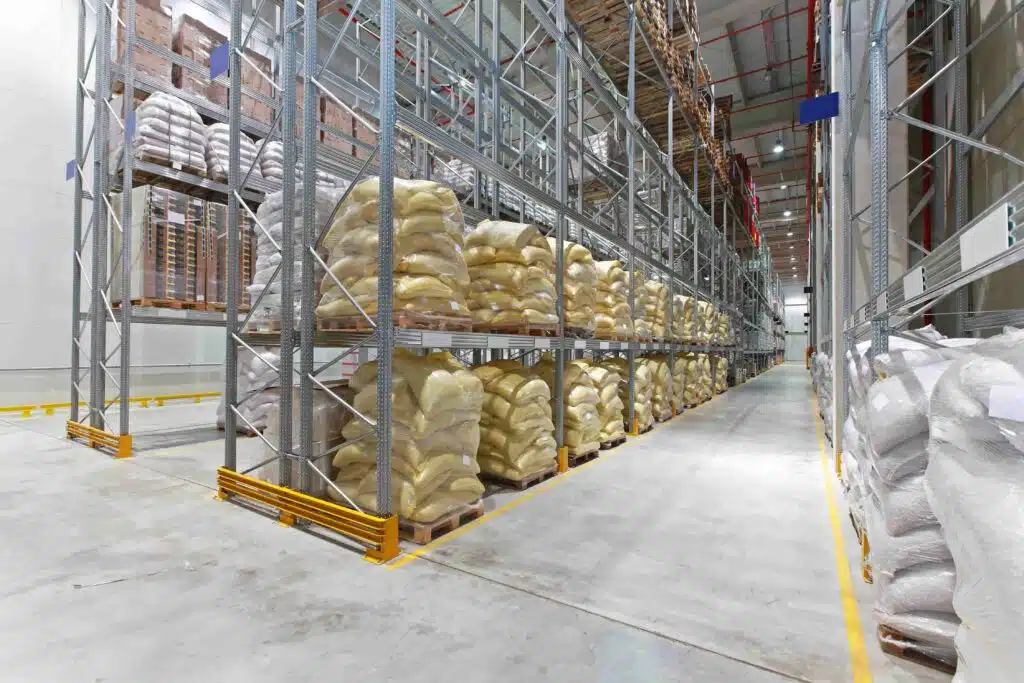Article At A Glance
- Food-grade facilities maintain safe transport temperatures, preserving freshness and safety.
- Speeding up shipping with faster delivery lowers the chance of food getting contaminated.
- Special containers, like refrigerated, insulated, and double-door containers, help maintain ideal conditions.
- Following FDA guidelines, performing vehicle inspections, maintaining clean facilities, and proper employee training ensure food safety.
Getting food from the distribution center to restaurants, grocery stores, and other facilities requires strict attention. Experts must abide by all food safety regulations the Food and Drug Administration put forth to ensure that no perishable item arrives in spoiled condition. At B & B Food Services, we understand the tremendous impact of food-grade facilities on cargo transportation and work tirelessly to make sure that every product reaches its destination in excellent condition.
Learn more about our food-safe cargo transport methods and how food-grade logistics centers help promote hygienic freight handling. These measures ultimately benefit restaurants, food retailers, and the consumer. Discover the impressive ways clean cargo handling facilities keep food items safe for transport.
Food Items Remain at a Safe Temperature Before and During Transport
Whether you’re ordering a supply of meats, seafood, or produce, the food storage temperature determines its viability. Leaving packages of raw chicken in warm environments for too long will spoil the meat and make it unsafe for consumption. Frozen food products and fresh produce must also stay at a regulated temperature to remain safe.
Certified food transport warehouses sort these products accordingly and store them in refrigerators or freezers until they’re ready for transport. Housing items in temperature-controlled places saves suppliers money by reducing food waste and building consumer trust. Once the products are ready for distribution, experts put the same care into food safety.
The Power of Expedited Trucking
It’s common for food distributors to transport products across long distances. Standard trucks feature refrigerated trailers to keep perishable items at a controlled temperature. Distributors may also insulate items using dry ice to keep them cold throughout the journey.
One of the biggest impacts of food-grade facilities on cargo transportation is the use of expedited trucking. Many suppliers, including B & B Food Services, use expedited shipping to reduce transit times. This reduces the chance that the refrigerated truck experiences equipment issues or that dry ice packaging loses its shelf life.
In addition, it provides a more efficient route for delivery drivers and decreases the risk of food contamination. Rather than have the driver open up the reefer at every stop and alter the temperature inside, this trucking method speeds up deliveries so products don’t become subject to hot outdoor temperatures.
Additional Read: Why Local Wholesale Food Suppliers Are The Best Option For Restaurants
Sanitary Transportation Facilities Implement Various Shipping Containers
Getting food products on grocery store shelves or restaurant kitchens requires the right shipping container. Transporting items in an ineffective container raises the risk of spoiling the product or contamination. Major food suppliers often utilize the following types of containers:
Dry storage containers: A common solution that comes in various sizes that help ship bulk and non-bulk items.
- Open top containers: Provide versatile storage for items with height since the top of the container pops open.
- Refrigerated containers: Ideal for shipping perishable food products and can maintain a temperature between -20 and 75 degrees Fahrenheit.
- Insulated containers: Help maintain a higher temperature and are safe for long-distance transit.
- Double door, open side, and tunnel containers: Each of these options is ideal for easy loading and unloading of products.
Ensuring Food Safety Regulations
If you’re curious about the impact of food-grade facilities on cargo transportation, we’re here to explain how these warehouses abide by all food safety standards set by the FDA. Below is a breakdown of the key measures that experts take to guarantee every food product remains safe for consumption.
Following Food Container Guidelines
Items like clothing or textiles don’t have to endure strict protocols for shipping and storage because their delivery methods don’t cause harm to consumers. Food products, especially perishable items, must arrive in excellent condition for people to consume them. Food-grade facilities evaluate their shipping containers and make sure they meet the following criteria:
- No history of carrying toxic chemicals
- Visible scratches are not larger than 2 millimeters
- Open food items don’t come in contact with the container
- A waterproof coating
All of these requirements prevent instances of food contamination during the transport process.
Shipping Vehicle Inspections
What is one of the biggest benefits of food-grade facilities on cargo transportation? Experts regularly perform inspections of each shipping vehicle to ensure it’s suitable for carrying food products. This practice is necessary before loading any vehicle, regardless of whether it’s carrying perishable or non-perishable items.
Trained personnel will go through a detailed checklist of the shipping truck before loading it with products. Staff will check for the following:
- Seals on all of the doors
- Holes or defects in the trailer that would contaminate food
- Odors from previous loads
- Evidence of odor-masking materials like coffee grounds
- Non-food items that could contaminate the products in a load
Personnel need to take additional measures to handle frozen or refrigerated items safely. They should check and record the food’s temperature multiple times, as well as the temperature of the vehicle. It’s best to record the temperature of items in the front, middle, and back of the truck to check for discrepancies that could indicate uneven cooling.
Maintaining a Clean Facility
The FDA’s regulations for food safety set a precedent for cleanliness in food-grade facilities and cargo transportation methods. To prevent food contamination or improper handling, staff will undergo intensive training to understand all the safety standards. This training includes basic employee hygiene measures and how and when to sanitize various equipment.
Facilities must be stringent about pest control since housing food products can attract unwanted critters. In addition, regular inspections of various products and shipping containers promote overall safety.
Additional Read: Challenges Of Food Service Distribution: Strategies For Success
Embrace Sanitary Transportation Facilities and Their Benefits for Food and Consumer Safety
Given the tremendous impact of food-grade facilities on cargo transportation, why would you choose a food supplier that uses alternative storage and transportation methods? B & B Food Services is an industry leader when it comes to hygienic freight handling. Our food-grade logistics centers follow all regulations, and we’re always looking for ways to improve our distribution methods.
Partner with us for superior food storage and distribution options. Submit a request online or call (815) 834-2621.

